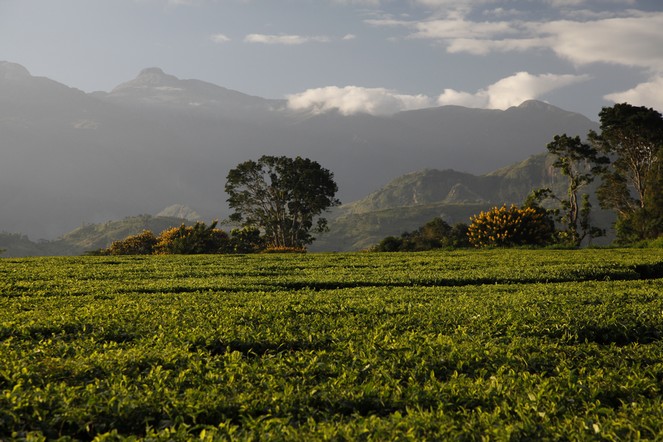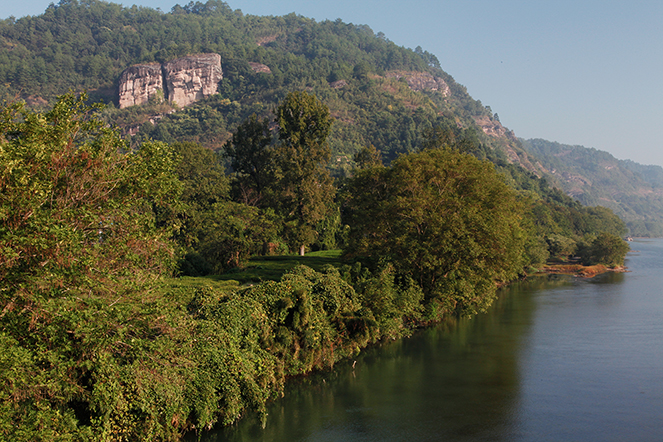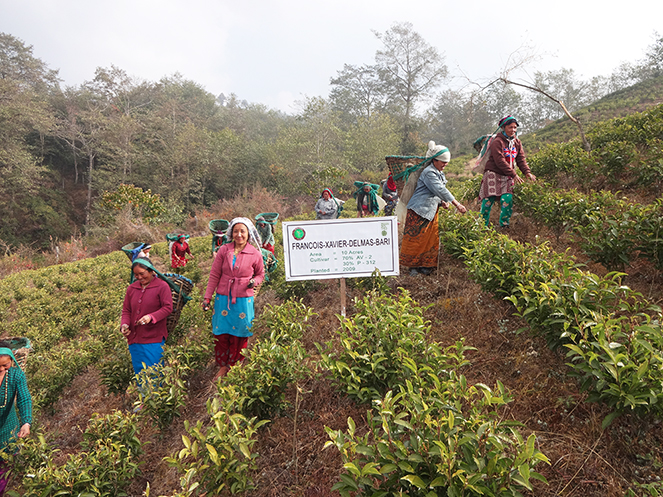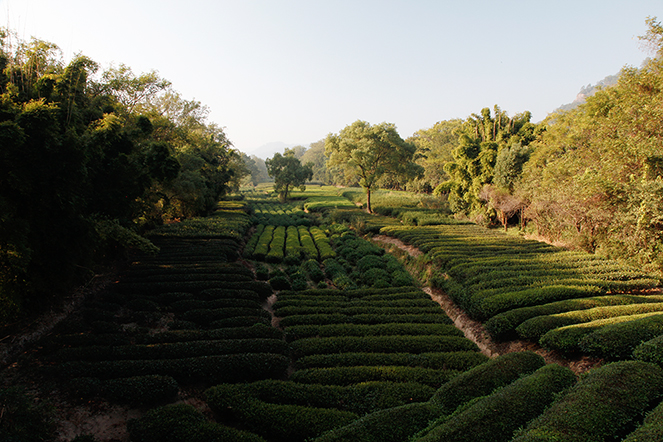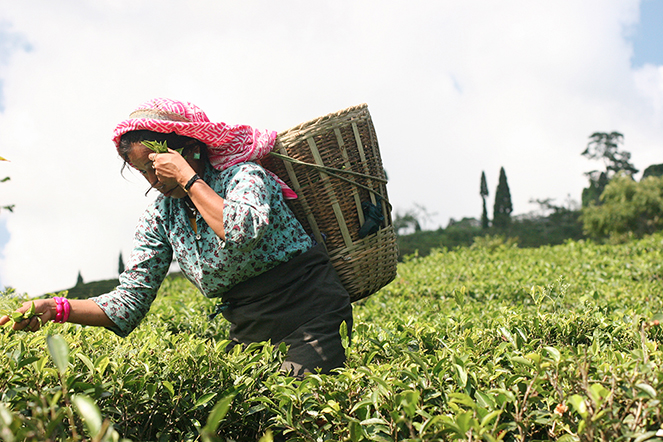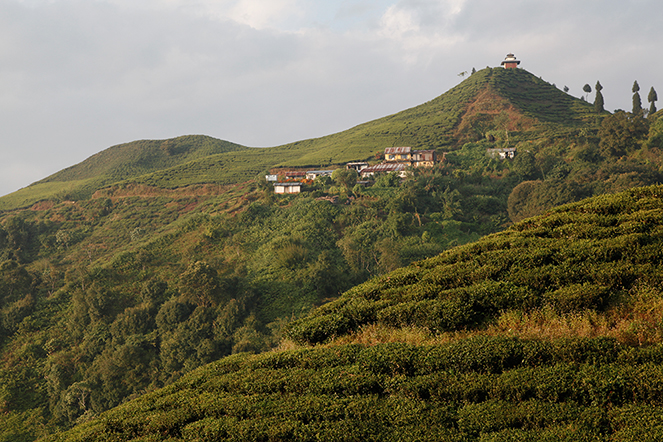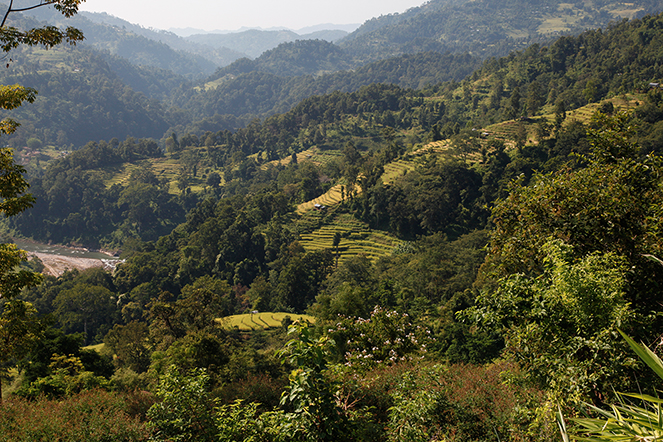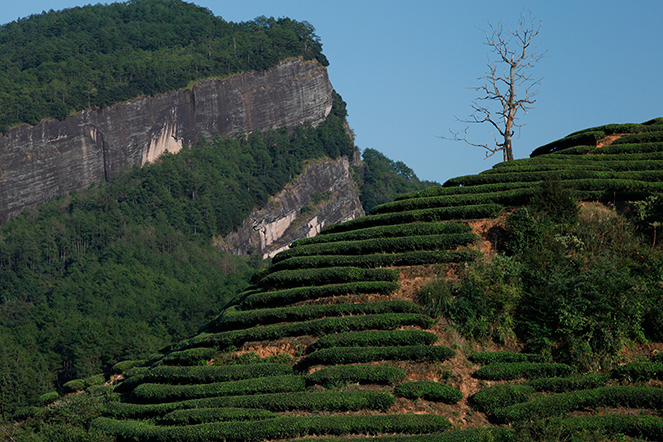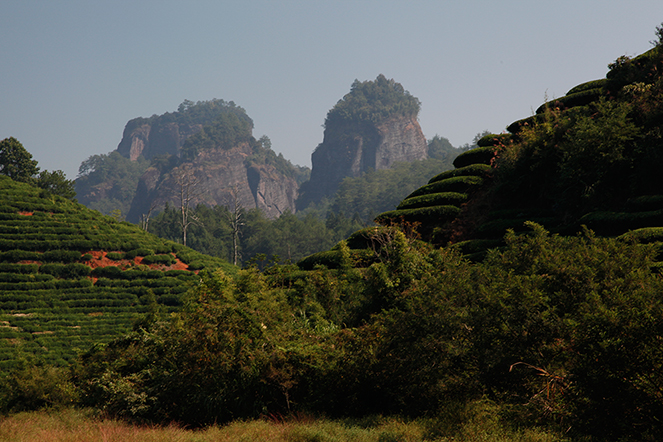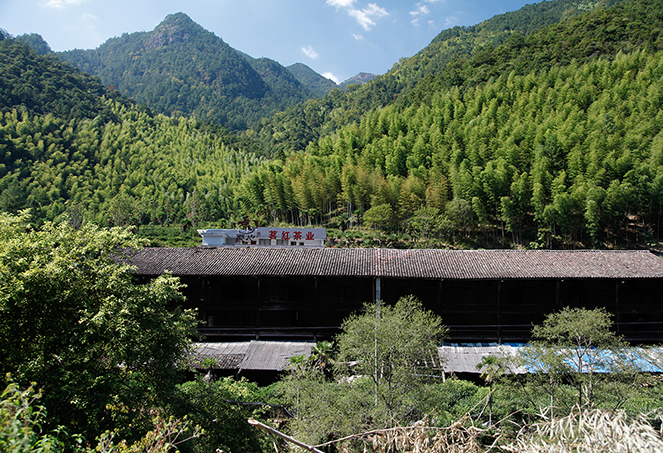Asia is not the only producer of good teas – Africa too, if you know where to look. I have just returned from Malawi. The countryside is exceptionally beautiful. Breath-taking. And the people of that country are so gentle, attentive and spontaneous, it’s quite incredible.
Plantation
Hidden garden in China
Often I find myself surrounded by mountains covered in tea bushes, and I love these spectacular, grandiose landscapes. But I also enjoy contemplating intimate gardens, discovering a few hidden rows of tea plants, so verdant yet out of sight. This secluded garden that stretches along the riverbank, sheltered by large trees and overlooked by rocky outcrops, is situated in the Wuyishan region. If you are in this part of China, you too may be able to spot these beautiful shrubs growing in the middle of the countryside.
A wonderful surprise from Nepal
Andrew Gardner, a pioneer of Nepalese premium teas, sent me this photo of one of the plots on his plantation. He has named it after me. It’s a wonderful surprise.
This gesture from Andrew has really touched me. Andrew knows my favourite varieties, and he has planted them here. Thank you, Andrew, for the quality of your teas, your passion, your optimism and your enthusiasm.
The incredible variety of teas in Fujian
In China, Fujian is one of the most important tea-producing provinces. Important from a historical perspective, because the first shipments of teas bound for Europe left from its ports; important also in terms of the tea itself, because Fujian is the country’s only province that grows Oolongs and the legendary white teas, as well as green teas, black teas, smoked teas and the finest jasmine teas in the country. It’s an incredible variety.
The Margaret’s Hope garden celebrates its 150th anniversary
This week, the Margaret’s Hope garden celebrates its 150th anniversary, and I am invited to the event. It’s an opportunity for me to remind you that tea was only introduced to India very late, in the mid-19th century. It was the British who set up the tea plantations in the country, after stealing the seeds of tea plants from China.
Margaret’s Hope makes teas that are sometimes exceptional, such as Margaret’s Hope DJ40 Moonlight, and Margaret’s Hope DJ219 Pure Av2. They are two fine teas from 2014 that I hope will be back next year.
Labour shortage in Nepal
Nowadays, the main problem facing Nepalese tea producers is a labour shortage. A significant portion of the population has left to find work in the Gulf countries or in Malaysia. This means the tea is only plucked once a fortnight on some mountains, which compromises its quality. Luckily, the plantations that produce the best teas are less affected. This problem does not only concern tea. The whole of the country’s manufacturing and farming sectors have been hit too.
Nepal: exceptional teas and scenery
Nepal produces some very fine teas, but so few people know about them! You have to travel for hours, and sometimes walk, to reach the mountains where the tea is grown. On the way I admire the scenery, with the paddy fields carved into terraces. The farmers work using the old methods, with the help of a buffalo. Life passes slowly. You listen to the birds sing. They announce the harvest time.
Rock tea: a mysterious name
Last week I wrote about “rock teas”, because I had just returned from that region of China. When you ask local farmers where the name comes from, some talk about the fact that the tea must be rocked at a particular stage during the processing. But others draw an analogy between the tea’s smooth flavour, its minerality and strength, and the amazing rocks around which the camellias grow.
Da Hong Pao: a legendary oolong
In China there is a very famous group of teas called “rock teas”. These semi-oxidised teas come from Wu Yi Shan, a mountain range in the north of Fujian province. The best known is Da Hong Pao. You have to taste it at least once in your life to realise what an exceptional tea this is. It has a rare strength and length in the mouth, yet remains subtle. It is fruity, toasted, woody and sweet at the same time.
The origins of “lapsang souchong”
Calling all smoked teas connoisseurs! It is here, in a Chinese regional park in the north of Fujian province, that all lapsang souchongs were produced for two hundred years. The origins of this tea date back to the 19th century, when a high-ranking Chinese army officer requisitioned the tea factory that stood here before this one, to house his regiment, leaving the farmer no choice but to dry his tea outside, over burning spruce roots. Which is how smoked tea came about.

